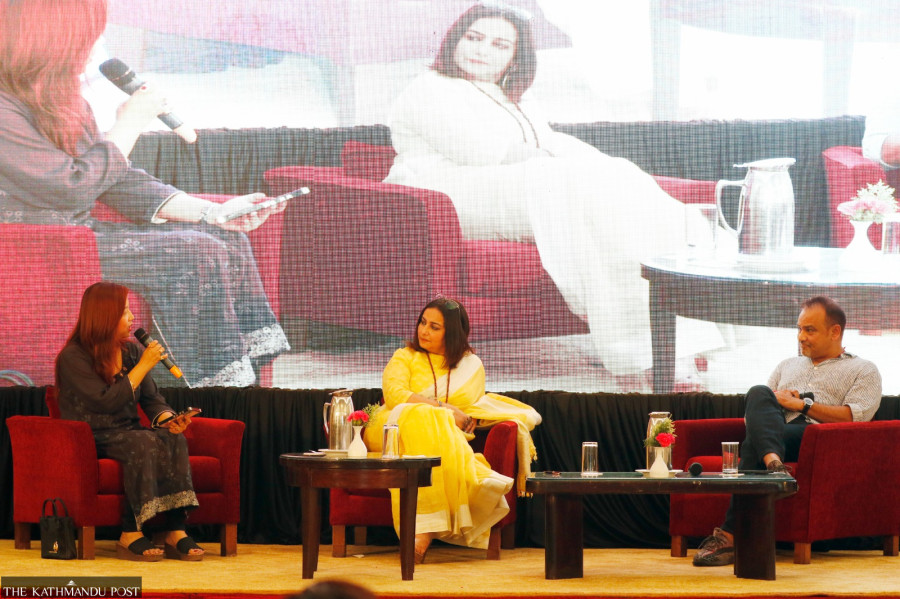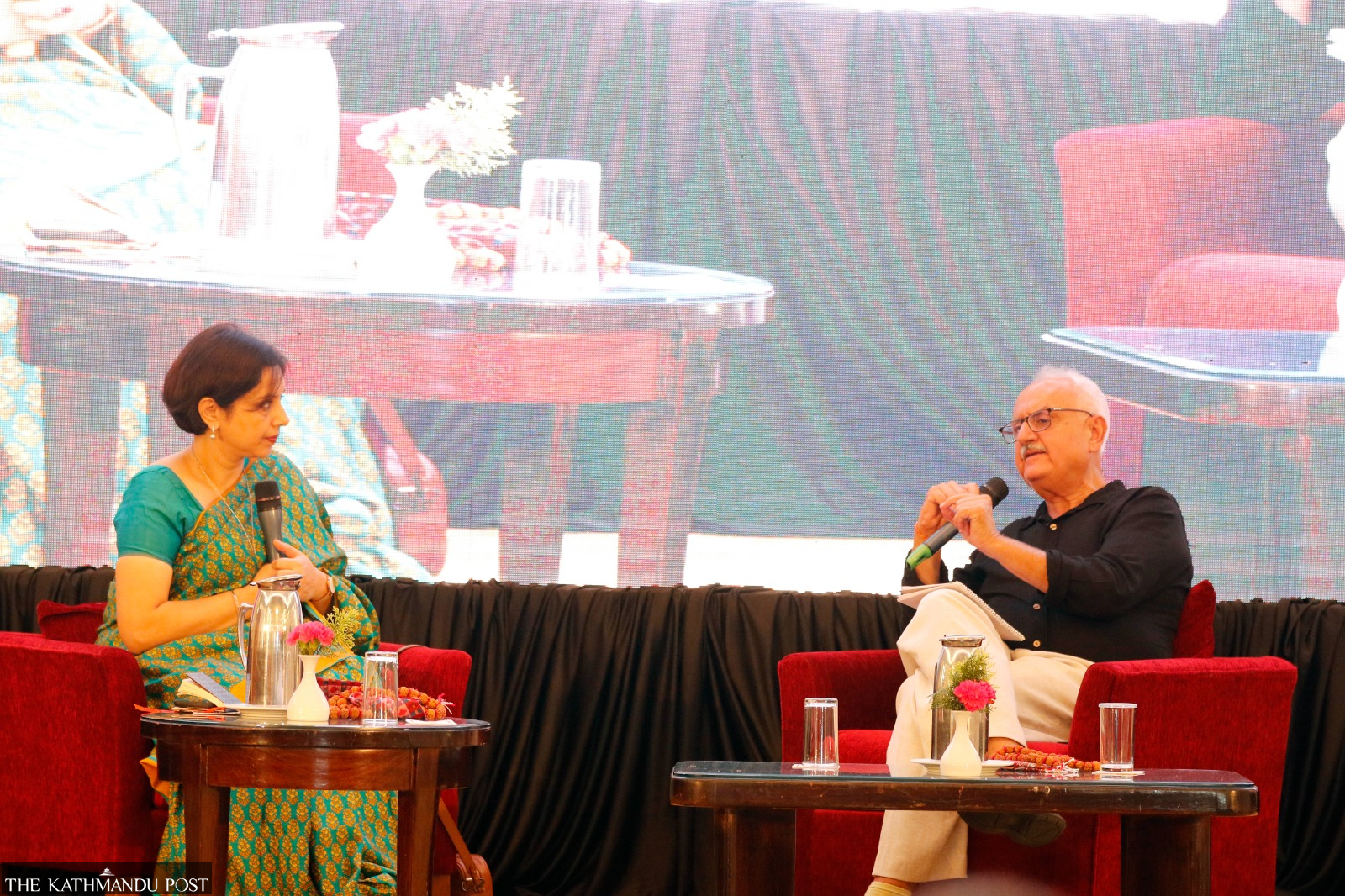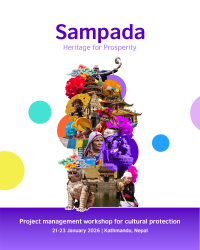Culture & Lifestyle
Exploring books and cinema at Kalinga Literary Festival Kathmandu
In its second edition, the festival has a wide range of sessions, from serious talks on geopolitics to fun discussions about cinema, providing a platform for diverse voices to be heard.
Manushree Mahat
Amidst the sprawling green surroundings tucked within the expansive, pristine white walls of Hotel Himalaya, one could hear the hubbub of enthusiastic speakers and equally excited listeners conversing in the language of literature. Despite the midday sun casting its heat, the eager attendees remained undeterred, immersing themselves in the realm of literature—finding refuge under the cool shade of tents and ornate air-conditioned halls of the hotel. This was the scene on the second day of the Kalinga Literary Festival (KLF) Kathmandu, a three-day affair where littérateurs from diverse spheres gather to discuss their craft and address pertinent issues within their respective domains.
This year marks the second edition of the festival, an ambitious extension of what was previously a two-day event. With the goal of broadening its horizons and welcoming a more extensive array of perspectives, the organisers expanded the programme from 40 sessions to an impressive 60.
Ranjana Niraula, the director and coordinator of the KLF Kathmandu, expressed the festival’s commitment to diversifying its content and addressing a wide spectrum of issues this year. The festival aimed to encompass a range of discussions spanning literature, cinema, tourism, and regional as well as global affairs.
“Our sessions are thoughtfully curated to engage both speakers and the audience,” explained Niraula, adding, “Some sessions are on books and cinemas are both lighthearted while also bringing important issues to the forefront, while others delve into topics like politics, tourism, business, and global issues that raise important questions about our society and world.”
Indeed, the festival’s sessions cover an extensive array of topics for reflection and consideration. The second day’s sessions included a thoughtful exploration of the relationship between Nepal and India, as well as India’s broader ties within South Asia. Suhasini Haider, the foreign affairs editor of The Hindu, and writer and journalist Kanak Mani Dixit shared their perspectives and opinions on India’s relations with its neighbouring states and the wider Asian region.
Their discussions were intellectually stimulating, touching on historical, economic, governance, and political aspects, all of which influence foreign policies. The dialogue gained depth as it became evident that the speakers didn’t always see eye-to-eye—Haider emphasised the challenges surrounding India, while Dixit highlighted internal complexities within India. These differing perspectives contributed to an engaging and informative session.

The festival struck a balance between serious discussions and more lighthearted ones. A session titled ‘Challenges and Potential of Cinema in the New Age of South Asia’ featured familiar faces from the media and film industry, such as actress Divya Dutta, known for her role in movies like ‘Bhaag Milka Bhaag’ and ‘Veer-Zaara’, and director Nila Madhab Panda, known for his socially sound movies like ‘Kadvi Hawa’. Journalist and filmmaker Sampada Malla moderated the session, and the three personalities shared their experiences in the industry, what they struggled with, passion projects, as well as the future of cinema, especially with the rise of OTT platforms.
Both Dutta and Panda’s openness during the discussion was commendable—one anecdote that stands out is Dutta’s recount of her experience with the director Shyam Benegal, who instilled lasting confidence in her through unconventional teaching methods. Panda’s optimism about how OTT platforms won’t hinder pursuing their passions provided a hopeful conclusion to the session.
A session that livened up the festival was the one featuring prominent figures from the Nepali and Indian film industry, including Manisha Koirala, Nir Shah, and Khagendra Lamichhane. Attendees were excitedly gathering around the stage for this session titled, ‘The 21st Century Reel: The Evolution of Nepali Cinema’.
The session discussed the intricacies of Nepal’s filmmaking industry, the lack of government support for emerging artists, and the low payment they get for their work. The panel also explored the evolving landscape of Nepali cinema, emphasising the shift towards nuanced performances over the melodramatic, preachy dialogues favoured by earlier audiences.
This was also one of the sessions that fostered active audience engagement. Attendees eagerly raised their hands, joining the discourse and posing questions about music in films and the presentation of movie trailers, among other things. The high audience engagement was a notable aspect of this year’s festival, according to Niraula.
As the festival continues into day three today, it promises more significant discussions through sessions like ‘Gender Violence and Its Impact’, ‘Narratives of Nature: Literature in the Age of Climate Change’, ‘Classical Dance: The Mystic Silence’, and many others.




 12.12°C Kathmandu
12.12°C Kathmandu















